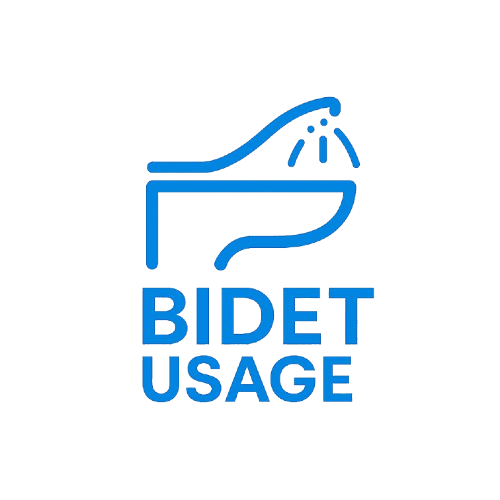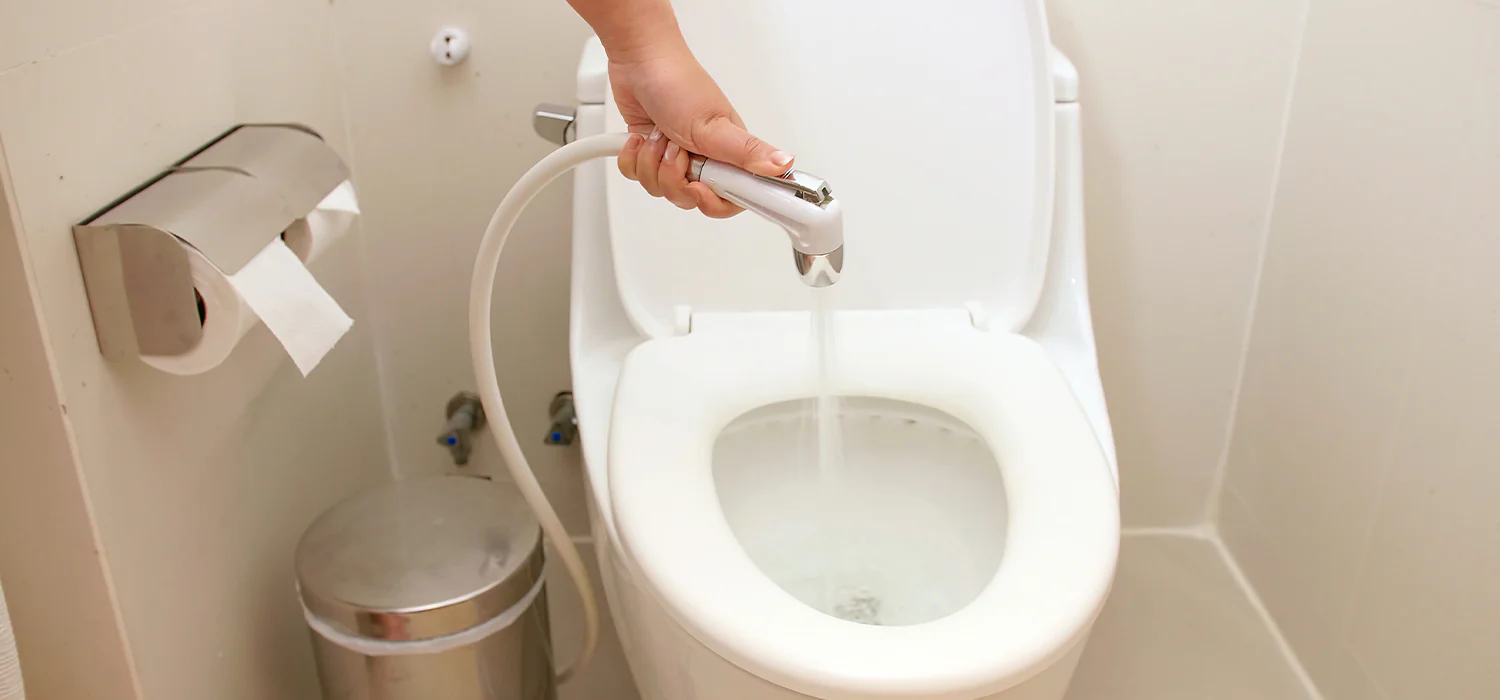A bidet is a sanitary device that delivers a jet of water to clean after defecation, urination or menstruation. The first bidet appeared in France back in the 17 century.
Bidets are a suitable replacement for toilet paper as they are more effective in infection protection and cleaning.
What are the Different Types of Bidets?
After their invention, there have been numerous variations in bidet designs based on their installation and functionality. Here are some most common types of bidets available in the market.
Built-in Toilet Bidet
This is all in one variety of bidets which comes along with a toilet seat. A built-in water jet is attached to the toilet seat such that it cleans after defecation.
Built-in toilet bidet is the most prominent variant that offers various functionalities. Some of the best features available in this kind of bidet are:
- Heated toilet seats
- Controlled water pressure and temperature
- Warmer air dryer
- Adjustable water nozzle angle
- More comfortable to use
Stand Alone Bidets
A stand-alone bidet is installed separately from the toilet seat. It can be installed hanging on the wall or directly on the floor. As it is installed beside the toilet, it is used for cleansing after defecation.
It is a traditional bidet style and is usually more expensive than other types.
Handheld Bidets
A handheld bidet, also known as a bidet sprayer, is a variant between portable and attachment bidets. You can’t take it away anywhere like a portable bidet.

A handheld bidet is attached to the water supply pipes of your washroom and hung on the wall after use. The features of this variety of bidets include:
- Budget-friendly bidet
- Better hygiene
- No extra electricity cost
- Easy to install
- Better mobility during use
Portable Bidets
As the name suggests, portable bidets are mobile and easy to carry away along with you during travel. They are also known as travel or backpack bidets.

They consist of a bottle to store water and a nozzle to spray water. This is not a common type of bidet, as it feels weird to carry a bidet along with you.
Portable bidets can be the best solution for travelers who want to clean themselves with water after defecation. Some features of portable bidets are:
- Best bidets for outdoor use
- Easy to carry away anywhere
- Inexpensive variety of bidets
Is Pre-Wiping Useful Before Using a Bidet?
Do you wipe before using a bidet? Should you? Pre-wiping is the process of cleaning yourself with toilet paper after defecation or peeing. It can help to clean faces before using a bidet.
Wiping before using a bidet can be a matter of personal choice. Some people choose to wipe before using a bidet, while others don’t use any toilet paper at all.
Pre-wiping is unnecessary in most cases, as a bidet can get your cleaning job done. Wiping before using a bidet can give you a clean and hygienic feel. If you decide not to use any toilet paper, still using a bidet directly is a safe way.
Should You Wipe After Using a Bidet?
Using a bidet properly can clean your back well. A good quality bidet will not leave any mass left. Many people are satisfied with their bidets and don’t use toilet paper.
A bidet has strong water pressure. It can clean you without any need to wipe. Wiping after using a bidet can be done for two reasons
- To check if any mass is left there
- To dry yourself after using a bidet
A bidet leaves you clean as well as wet. Today’s modern bidets come with a warm air dryer. If you have a bidet with no dryer, wiping yourself with toilet paper can make you dry. This is the primary reason most people wipe after using a bidet.
Are Bidets Good for Hemorrhoids?
A hemorrhoid is a painful and uncomfortable disorder. It causes severe swelling in the veins of the rectum or the area around your anus. Using toilet paper after defecation can be painful.
Also, toilet paper may cause bleeding if you wipe it harder to clean yourself well. On the other hand, wiping gently may not clean your anus well, which will increase the chances of getting more infections.
Bidets are good for hemorrhoids as they can clean your anal area without causing any pain. Bidets will help to wash your anus clean without leaving any feces mass left behind.
Can Bidets Cause UTI?
UTI (Urinary tract infection) is the most common infection caused by bacteria in adults. Our urinary tract consists of the kidney, bladder, and urethra.
So, any bacterial infection in these body glands can lead to UTI. Over 150 million UTI cases are registered every year worldwide.
Many bidet users ask: do bidets cause UTI? Let us try to understand:
- Can bidet cause UTI?
- In which cases can bidets cause UTI?
- How can We Avoid UTI while using the bidet?
Medical specialists always suggest that you don’t wipe from back to front. This may cause bacteria to get into your urinary tract, which will lead to UTI.
Bidets come with a built-in water jet that cleans from front to back. So, there are fewer chances of getting UTI by using a bidet.
In the case a bidet is in your control, for instance, if you are using a portable or handheld bidet, make sure to follow the cleaning pattern from front to back. Paying attention to these cautions will reduce the chances of getting UTI.
Can Bidets Cause Infections?
According to medical experts, bidets are safe to use. However, there Are some factors that can cause some health risks. So you need to focus on the following factors to avoid any kind of infection.
- Your bidet should be made of good-quality material.
- It should clean well.
- Its pressure matches the recommended pressure(30 to 80 PSI).
- Water temperature should not be higher than 110°F (43°C).
Although using bidets is a safe way to clean yourself. At the same time, improper use may cause some health risks. Here are some most common problems bidets can cause.
Anal Itching
Anal itching is a common side effect of using bidets. People with sensitive skin are more likely to get this problem. Using warmer water or a high-pressure water jet can cause anal itching. To avoid this disorder, ensure your bidet water pressure, and temperature matches the recommended digits.
Anal Fissure
An anal fissure is a small tear in the anus skin tissues. Along with other reasons, it may be due to the higher water pressure of the bidet. It can be painful, followed by bleeding.
Bacterial Infections
Public toilets are always risky as they are not well-cleaned and maintained. A built-in bidet toilet seat is riskier as there is direct contact between the toilet seat and the skin. This may lead to bacterial infections.
Cautions to Use Bidets
For safe use of bidets, follow up on these steps.
- Make sure the bidet seat is clean
- The water is not much warm
- Bidet pressure should not be higher than 80 PSI
- Wipe before using the bidet to remove extra faces mass
- Wipe with toilet paper to dry yourself after using the bidet
- Clean the nozzle with toilet paper while using a public bidet
Conclusion
Bidets are a great alternative to toilet paper. As toilet paper is made with wood, the production of toilet paper on a large scale can affect our environment and ecosystem. Therefore, using bidets can be beneficial for us.
Wiping before and after using a bidet can be a personal preference. Some people choose to wipe while others not. You don’t need to wipe if a bidet is getting the job done for you.

